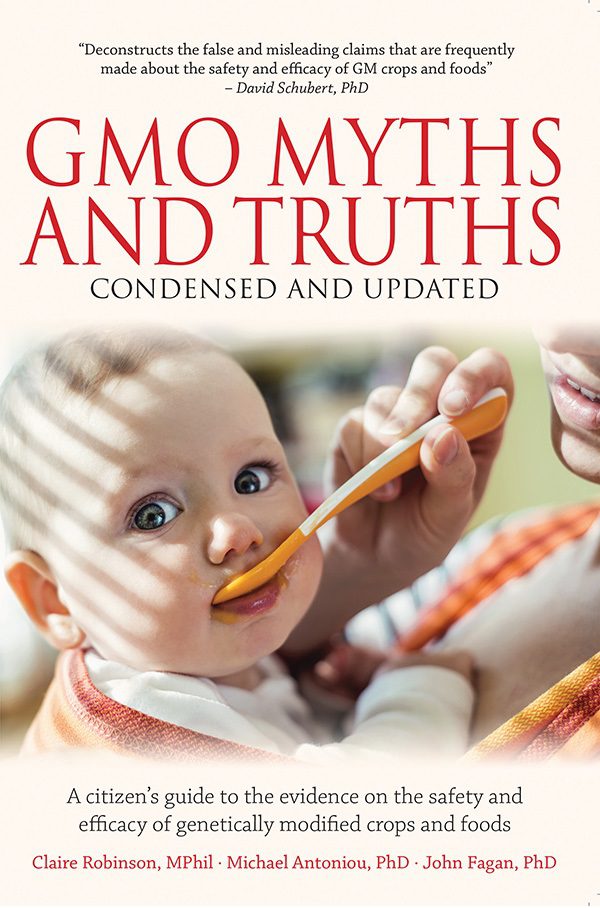It is often claimed that the case against genetically modified (GM) crops and foods is based on emotion, not science, and that to oppose GM crop and food technology is to be anti-science. It is also claimed that GM crops offer higher yields and better nutrition, that they are safe for health and the environment, that they reduce agrochemical use, and that they are needed to feed the world’s growing population. This book, co-authored by two genetic engineers and a writer/researcher, exposes these claims as false, using scientific and other documented evidence. GMO Myths and Truths summarizes the facts on the safety and efficacy of genetically modified (GM) crops and foods in terms that are accessible to the non-scientist but still relevant to scientists, policymakers and educators. The evidence presented points to many hazards, risks, and limitations of genetic engineering technology. These include harms found in animal feeding and ecological studies, which in turn indicate risks to health and the environment posed by GM crops and foods.
The layout of the book enables those readers with limited time to read the chapter summaries, while providing more detail and full references for those who require them. At 164 pages of paperback size, this new condensed version is shorter and more accessible than the authors’ 330-page report by the same name, which has been downloaded over half a million times.
The book shows that conventional breeding continues to outstrip GM in developing crops that deliver high yields, better nutrition, and tolerance to extreme weather conditions and poor soils. In agreement with over 400 international experts who co-authored a UN and World Bank-sponsored report on the future of farming, the authors conclude that modern agroecology, rather than GM, is the best path for feeding the world’s current and future populations in a safe and sustainable way.
Co-author Claire Robinson said: “Many people find it difficult to read a long and detailed pdf document on their computer, and many people and organizations would prefer to present to policymakers and industry leaders a more concise, professionally produced book. We have been asked time and again for a ‘real’ book – and here it is!”
Co-author Dr Michael Antoniou said: “This book provides evidence that dismisses claims of a scientific consensus on GM food safety in a concise, accessible and easily digestible format.”
Co-author Dr John Fagan said: “When someone tells you there is no evidence that GMOs are risky for health and the environment, give them this book. It provides the essential evidence of harm concisely and clearly, and every point is referenced to peer-reviewed scientific research publications or other reports or documents that can be checked by the reader.”
Compared with the 2014 online version, the book offers new information, including:
Why the study touted by GMO proponents as the “trillion meal study” showing GM foods are safe fails to provide any credible evidence for GMO safety
Why the temporary uptick in India’s cotton yield in the early 2000s was not due to GM Bt cotton, but the current decline in yields is
How industry’s own tests showed Bt eggplant was toxic and how the crop failed for two years running in Bangladesh – the opposite of GMO spinmasters’ claims
How a peer-reviewed publication by over 300 scientists declares that there is no scientific consensus that GM crops and foods are safe
Why the US government’s approval of GM crops engineered to resist the herbicides dicamba and glyphosate will create problems for farmers and health risks for consumers
How a peer-reviewed paper shows claims that GM crops have reduced insecticide use are unreliable because they fail to consider escalating insecticide seed treatments in their calculations
How a peer-reviewed gene expression analysis confirms that rats fed an ultra low dose of Roundup (within permitted regulatory limits) suffered liver and kidney damage.

